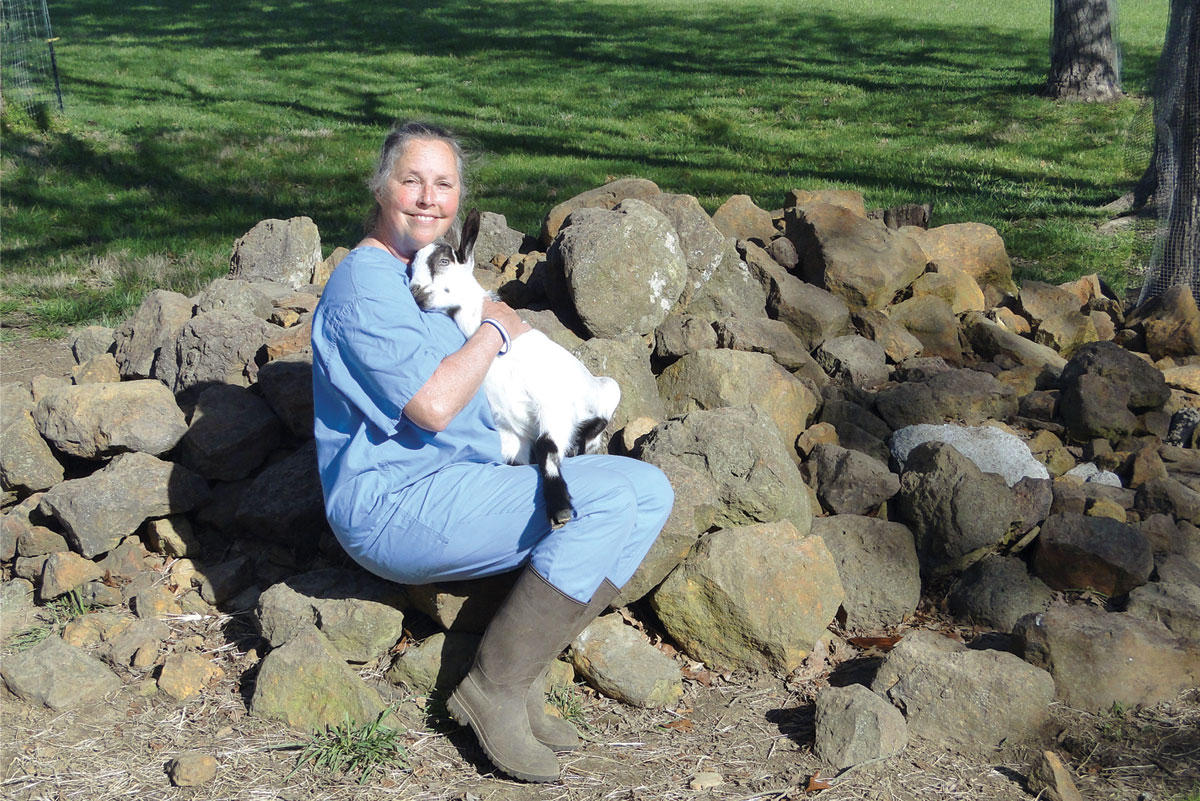 Tom and Lydia Cassilly raise Dorking chickens and Alpine dairy goats
Tom and Lydia Cassilly raise Dorking chickens and Alpine dairy goats
Everyone’s entrance into agriculture is unique.
For Tom and Lydia Cassilly of Jasper, Ark., this is especially true. Lydia pursued a degree in equine studies while Tom graduated with a degree in biology and chemistry before returning for a bachelor’s in nursing. Right before graduation, Lydia went east to develop a horse-riding training facility before she and Tom settled in Florida to pursue careers. Lydia feels the most important thing she learned outside of school was taught to her by a horse named Charming Charlie when she was a young girl.
“That horse didn’t like people much and taught me how to talk to animals from the soul, a skill I have always used. I even know a deer’s nose is warm.” Lydia exclaimed.
Tom has always worked as a surgical nurse while Lydia, highly creative and with a passion for perfection, started as an office manager for an orthopedic surgeon before the routine and pressure took her to tropical fish. There she was known as the “fish Nazi” because she demanded prospective owners of rare species prove quality care before the she would complete a sale. She also a designed a touch tank at the Shell Museum on Sanibel Island.
During their time in Florida, Lydia trained for and became part of the National Disaster Animal Rescue Team (DART). After Hurricane Andrew and Tom’s constant battle with asthma, the couple decided to seek a different environment with fewer people, moderate temperatures and more asthma-friendly.
They moved to Arkansas 17 years ago, where Tom continued his career at the North Arkansas Regional Medical Center. Meanwhile Lydia searched for ways to help their new community while striving to save a heritage, dual-purpose breed of chickens called Spangled Dorking. They purchased 6 1/2 acres near their home with the intention of raising French Alpine dairy goats to add to their chickens and extensive greenhouse production. An offshoot of Alpine goat production is Tom’s emerging interest and passion for pack goats as a way of extending the longevity of elderly people’s outdoor activities of camping and hiking because a 250-pound goat can carry 40 pounds.
Since Lydia’s main focus for the last few years has been goats, her chicken flock has temporarily decreased to 22 hens and three roosters from a previous flock size of 100 with 60/100 being butchered annually for food. Though eggs have always been an important product, the flock is annually replenished through egg hatching, with a return to the previous higher numbers to increase operation meat production.
The history of the English Dorking is shrouded in mystery. Some feel the five toed chicken arrived from Italy when the Romans conquered England, while others attribute their arrival to the Romans bringing five-toed chickens raised in Belgium. Still others believe they were brought by Phoenician traders. Regardless, the birds were highly prized and at one time reserved only for nobility during medieval banquets. Sadly, the number of breeds has decreased dramatically.
“As far as I know I have the last viable flock in the country,” Lydia said. Fortunately, because Dorkings are the base of all our current dual-purpose breeds and are still available, we can use them to re-create any dual-purpose breed that may be lost in the future. The Society for the Preservation of Poultry Antiquities strives to maintain genetic diversity with one benefit being the preservation of a long-term food supply should something unforeseen occur in the feed-the-world production industry.
Several goals define Hydala Alpines. One is to make excellent genetics available and affordable for people in the area. Lydia uses high-end goats from Iron Rod Alpines in Virginia because of consistent quality offspring, high potency and multiple national grand champions. A second bloodline from Soldier Mountain in Idaho produces massive amounts of milk with a good butterfat content. The combination of these two bloodlines will produce excellent genetics for the area.
While a second goal is to make milk and meat available for local consumers, especially those in need, another is to interest the public, especially children, in how food is produced. They hope to spark an interest among young people that leads to agricultural careers. To this end, a hands-on field trip for 4-H students is planned for June with possible further trips focusing on their greenhouse and chickens.
The Cassilly herd contains 10 milking does, a senior buck, two yearling bucklings and this year’s crop of 20 kids. The Cassilly mothers suckle their young and with plenty of milk remaining for bottling. Milking takes place each morning though a few does need additional milking for comfort.
Each doe has its own feed formula based on a dairy specific pellet with 14 percent protein sweet feed and black oil sunflower seeds. Because Lydia does her own microscopic fecal sample testing, an herbal wormer is used as a top dressing only as needed. Powdered minerals are also used to supplement foraging and hay. Because fescue is toxic to so many animals, Bermuda hay is purchased from as far away as 60 miles, with Lydia hoping someday to find an orchard grass/lespedezza supplier. Other future plans include permanent cross fencing to match their new perimeter fencing.
Lydia said, “I’d love to learn how to AI but can’t take classes on Saturday which is when all the classes I’ve found are offered.”







